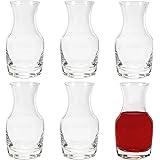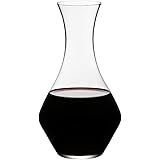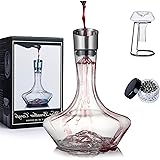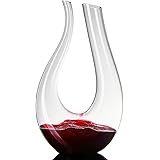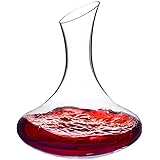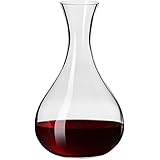Embarking on your home winemaking journey with a kit is arguably the easiest and most rewarding way to start. As demonstrated in the accompanying video, crafting delicious wine from a pre-packaged kit, like the featured White Zinfandel, simplifies the entire process, allowing even absolute beginners to achieve perfect results. While traditional winemaking from fresh fruit can seem daunting, these kits provide all the essential ingredients and clear instructions, minimizing guesswork and maximizing your chances of success.
Making your own wine from a kit yields a substantial amount, typically five to six gallons, which translates to an impressive 25 to 30 bottles of finished wine. This significant output not only offers excellent value but also provides plenty of wine to share with friends and family or to age for future enjoyment. However, understanding the foundational principles and the “why” behind each step is crucial for mastering this rewarding hobby.
Choosing the Right Wine Kit: Quality and Variety
The world of wine kits offers an incredible variety of options, from light-bodied whites like Chardonnay and Pink Moscato to robust reds such as Trinity Red. These kits often feature grapes sourced from renowned wine regions globally, including California, Chile, and Spain, ensuring a diverse flavor profile for every palate. The quality and complexity of a wine kit are generally reflected in its price point.
More expensive kits often boast a higher juice-to-water ratio, contributing to a fuller body and richer flavor in the finished wine. In contrast, some kits include unique enhancements like oak flavorings, which impart notes of vanilla, toast, or spice, or even real grape skins, providing deeper color, tannins, and a more complex mouthfeel. While the video showcases a “Wine Expert” kit known for its reliability and ease of use, exploring different brands and types can lead to discovering your personal favorites. Always consider what kind of wine you enjoy drinking when selecting your kit; a well-chosen kit sets the stage for a delightful winemaking experience.
Essential Equipment for Kit Winemaking
While a wine kit supplies most of the liquid ingredients and additives, you will need a few pieces of specialized equipment for the fermentation and aging processes. Investing in good quality, sanitized gear is paramount for preventing contamination and ensuring a successful batch. Here’s a list of the must-have items:
- Eight U.S. Gallon Fermentation Bucket: This larger bucket provides ample head space for the vigorous primary fermentation.
- Bung and Airlock: These allow carbon dioxide to escape without letting oxygen or contaminants in, crucial for healthy fermentation.
- Hydrometer and Test Jar: Essential tools for measuring specific gravity, which indicates sugar levels and helps calculate the alcohol by volume (ABV).
- Siphon and Tubing: Used for “racking” the wine, transferring it from one vessel to another while leaving sediment behind.
- Thermometer: Helps monitor and maintain optimal fermentation temperatures.
- Large Mixing Spoon or Paddle: For stirring ingredients thoroughly.
- Carboys (3 or 5 Gallon): These glass or plastic vessels are used for secondary fermentation and aging, allowing the wine to clarify.
Many local homebrew supply stores, like Bailee’s in York, Pennsylvania mentioned in the video, offer these supplies, often with knowledgeable staff to guide your purchases. Supporting these local businesses is a great way to engage with the winemaking community. Alternatively, online retailers provide convenient access to a wide range of equipment. However, remember that some juice-only kits do not include all necessary additives, requiring you to purchase them separately.
The Winemaking Process: Step-by-Step Guide with Insights
The beauty of a wine kit lies in its detailed instructions, which simplify complex chemistry into manageable steps. Adhering closely to these guidelines, while understanding the underlying principles, will lead to a successful batch. Here’s a breakdown of the key stages:
1. Absolute Sanitization: Your First and Most Important Step
Before any ingredient touches your equipment, every piece must be thoroughly sanitized. This critical step prevents unwanted bacteria and wild yeasts from contaminating your wine, which could lead to off-flavors or spoilage. The video highlights StarSan, a popular no-rinse sanitizer, used at a ratio of approximately half an ounce per two and a half gallons of water. While the exact process isn’t detailed, ensuring all surfaces that will contact the wine are completely clean is non-negotiable.
2. Preparing the Primary Fermentation Bucket
Begin by adding the Bentonite package to your primary fermentation bucket. Bentonite, a clay-based filtering agent, plays a crucial role in clarifying your wine later by attracting and settling out suspended particles. After adding the Bentonite, incorporate eight cups of hot water, stirring vigorously to break up clumps. Although some small clumps may remain, persistent stirring will help dissolve most of it, preparing the solution for the juice. This initial mix ensures the Bentonite is well-dispersed from the outset, leading to a clearer final product.
3. Introducing the Juice and Achieving Proper Volume
Next, carefully pour the large bags of concentrated juice into your bucket. The aroma alone can be incredibly inviting, hinting at the delightful wine to come. Rinse the juice bags with water and add that water to the bucket to ensure you capture every bit of flavor. This minimizes waste and maximizes the kit’s potential. Gradually add clean drinking water to the bucket until you reach the desired volume, typically six gallons for most kits. However, as demonstrated in the video, some winemakers may choose to fill slightly less, perhaps to five and a half gallons, to achieve a bolder flavor profile, particularly for varietals like White Zinfandel.
4. Measuring Specific Gravity and Calculating ABV
Once the juice and water are mixed, it’s time to measure the starting specific gravity (SG) using a hydrometer and test jar. This measurement is vital because it indicates the sugar content in the must, which will later convert into alcohol. The speaker aims for a potential alcohol level (ABV) between 10% and 15%, ideally not much less than 10%. For the White Zinfandel in the video, an initial SG yielding 11.5% to 12% ABV was achieved. Adjusting the water volume slightly can help you hit your desired starting SG, ensuring your wine ferments to the intended alcohol level. This precise measurement helps you control the final characteristics of your wine.
5. Pitching the Yeast for Fermentation
With the specific gravity confirmed, it’s time to “pitch” the yeast. Simply sprinkle the yeast packet directly onto the surface of the juice. Unlike traditional fruit winemaking, where Camden tablets (potassium metabisulfite) are often used to kill wild yeasts and require a 24-hour waiting period before pitching cultured yeast, wine kits are pre-treated. This means you can add the yeast immediately, saving time and simplifying the process. The yeast will begin its work converting sugars into alcohol and carbon dioxide, a transformative process that marks the true beginning of your wine.
6. Primary Fermentation: The Active Stage
Secure the lid and airlock onto the fermentation bucket. Within 24 to 48 hours, you should observe bubbling in the airlock, indicating active fermentation. While kit instructions often advise leaving the wine undisturbed for the full 14-day primary fermentation period, experienced winemakers, like the one in the video, sometimes deviate. Introducing oxygen by stirring the wine for the first five to seven days can encourage the yeast to “bloom” more vigorously, especially in a slightly smaller bucket. However, this is a nuanced step; adding oxygen later in the process would be detrimental, as it can lead to oxidation. Once primary fermentation appears to slow down, it’s time to check the specific gravity again.
7. Monitoring Fermentation Progress and Racking
Around day 14, following the kit instructions, measure the specific gravity once more. The goal is for the SG to drop to approximately 1.000 (or below), indicating that most of the sugar has been converted to alcohol and fermentation is complete. A steady SG reading over several days confirms this. Once fermentation finishes, it’s time to “rack” the wine. Racking involves carefully siphoning the wine from the primary fermentation bucket into clean, sanitized carboys, leaving behind the sediment (lees) at the bottom. This process separates the wine from spent yeast and other particles, contributing to clarity and preventing off-flavors. As shown in the video, using smaller carboys can make managing and moving the wine much easier.
8. Adding Clearing Agents and Degassing
After racking, the next step usually involves adding clarifying agents like potassium sorbate and Chitosan. Potassium sorbate is a stabilizer that prevents any remaining yeast from refermenting, ensuring the wine doesn’t spontaneously start bubbling again later. Chitosan, often used in conjunction with a prior additive (like the one added 24 hours before in the video, typically another fining agent like Kieselsol), effectively binds with suspended particles and yeast, causing them to settle at the bottom. These two-part clearing agents are highly effective, as evidenced by the rapid sediment formation within just 24 hours shown in the video.
Following the addition of these agents, the wine needs to be degassed. This involves stirring the wine vigorously for about 10 minutes, changing direction periodically, to release dissolved carbon dioxide. Trapped CO2 can negatively affect the wine’s taste and appearance, making it cloudy or giving it an unpleasant fizz. While challenging in a full carboy, thoroughly degassing is crucial for achieving a smooth, clear wine.
9. Aging and Clarification
Once degassed and topped off with any provided topping juice, seal your carboys with airlocks and store them in a cool, dark place, such as a basement, for two to four weeks. Light exposure can damage wine, so darkness is key. During this period, the fining agents will continue their work, pulling any remaining sediment to the bottom, allowing the wine to clarify beautifully. Resist the urge to disturb the carboys too much during this critical clearing phase. This waiting period allows the flavors to meld and mature, enhancing the overall quality of your homemade wine.
Remember, making wine from a kit takes all the thinking out of winemaking, providing everything you need for a truly great White Zinfandel. This brand of kit is an excellent choice for anyone looking to make high-quality homemade wine with minimal effort.


